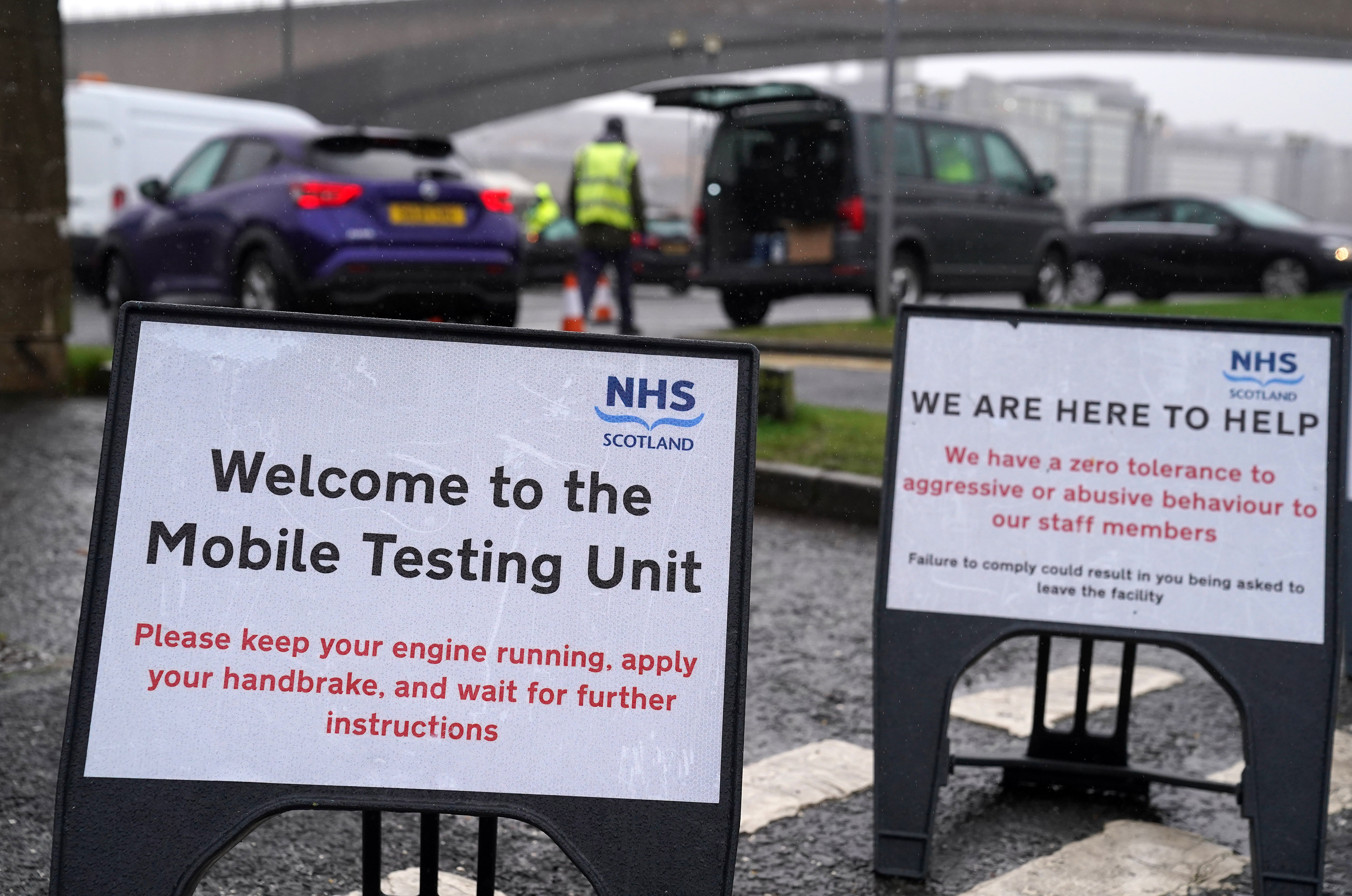Deltacron and Stealth Omicron differences explained as Covid infections in UK surge again
Two new Covid-19 variants are surging across the globe but what exactly are they? And should we be worried?
Your support helps us to tell the story
From reproductive rights to climate change to Big Tech, The Independent is on the ground when the story is developing. Whether it's investigating the financials of Elon Musk's pro-Trump PAC or producing our latest documentary, 'The A Word', which shines a light on the American women fighting for reproductive rights, we know how important it is to parse out the facts from the messaging.
At such a critical moment in US history, we need reporters on the ground. Your donation allows us to keep sending journalists to speak to both sides of the story.
The Independent is trusted by Americans across the entire political spectrum. And unlike many other quality news outlets, we choose not to lock Americans out of our reporting and analysis with paywalls. We believe quality journalism should be available to everyone, paid for by those who can afford it.
Your support makes all the difference.Hopes that the pandemic was over may have been premature if the latest Covid figures are anything to go by.
Overall coronavirus cases in the UK continue to rise, with more than 170,000 new cases reported on March 14 alone.
New Covid-19 sub-variants are believed to be behind a global surge that has resulted in China’s first deaths in a year, record numbers of infections in South Korea, a 14 per cent jump in cases in Africa and, here in the UK, rising hospital numbers.
Deltacron and Stealth Omicron are two strains that appear to be ushering in yet another new phase of the fight against coronavirus.
But what exactly are they? And should we be worried?
What is Deltacron?
As the name suggests, it’s a Covid-19 strain that is made up of elements from both the previous Delta and Omicron variants: it almost certainly came into existence in a patient who was infected with both at the same time.
So far it has been detected in several regions of France and appears to have been circulating since early January.
But it was only officially recognised as a new variant after its full genomic sequence was submitted to the international Covid database, GISAID, by virologists from L’Institut Pasteur in Paris.

Around 30 cases have been detected in the UK, according to the UK Health Security Agency.
How dangerous it could be remains open to conjecture. Analysis suggests it is largely similar to Delta but comes with Omicron’s spike protein – the part that binds a virus to human cell.
By rights, this could be a worry because it means it combines Delta’s severity with Omicron’s infectiousness.
Yet because of growing human immunity to both variants, scientists suggest it is, so far, doing relatively little harm.
What is Stealth Omicron?
The better known of the two variants, this is a direct sub-lineage of Omicron also known as BA.2 (Omicron was BA.1) and first discovered in the UK in December. The UKHSA currently labels it a “variant under investigation” rather than a variant of concern.
Yet experts suggest it may be the most transmissible strain of coronavirus yet.
“The basic reproduction number…for BA.2 is about 12,” wrote Professor Adrian Esterman, a former World Health Organisation epidemiologist, on Twitter: “This makes it pretty close to measles, the most contagious disease we know about.”

Already, it is thought to account for more than half of all new cases in England, while it has also been detected in Germany, China and India. In Denmark, it is thought to have caused a huge surge through February.
That’s the bad news.
The good? Denmark’s surge plateaued remarkably quickly and is now receding, while initial data suggests that Stealth is no deadlier than the original Omicron and just as susceptible to vaccines.
How many cases are there of each?
Global numbers remain unclear for Deltacron. About 30 cases are thought to have been identified in the UK with 17 more in the US but there have also been several found in France where it was first identified, as well as in the Netherlands and Denmark.
For the more established Stealth, there is better data. In England, it is said to have accounted for 57 per cent of the 27,000 new cases recorded in the final week of February, while in the US it is thought to make up 23.1 per cent of all cases.
Surges in China, Hong Kong and South Korea – where there is far less natural immunity – are thought to be down to both the original Omicron and Stealth.

How serious could they both be?
Inevitability, just by sheer force of numbers, greater transmissibility ultimately means more serious infections and more deaths.
Countries with low natural immunity and less vaccine uptake will be especially vulnerable. Omicron and Omicron Stealth, experts say, are very much behind the large numbers of deaths in Hong Kong during the last two months, as well as growing serious case numbers in China and a record surge in South Korea.
In the UK, the picture appears more complex.
Case numbers have risen by more than half a million in the last seven days with a small but significant uptick in hospital number.
How much this is down to the seriousness of the new variants and how much is down to loosening of restrictions and waning vaccine coverage is something that currently remains unclear.





Join our commenting forum
Join thought-provoking conversations, follow other Independent readers and see their replies
Comments